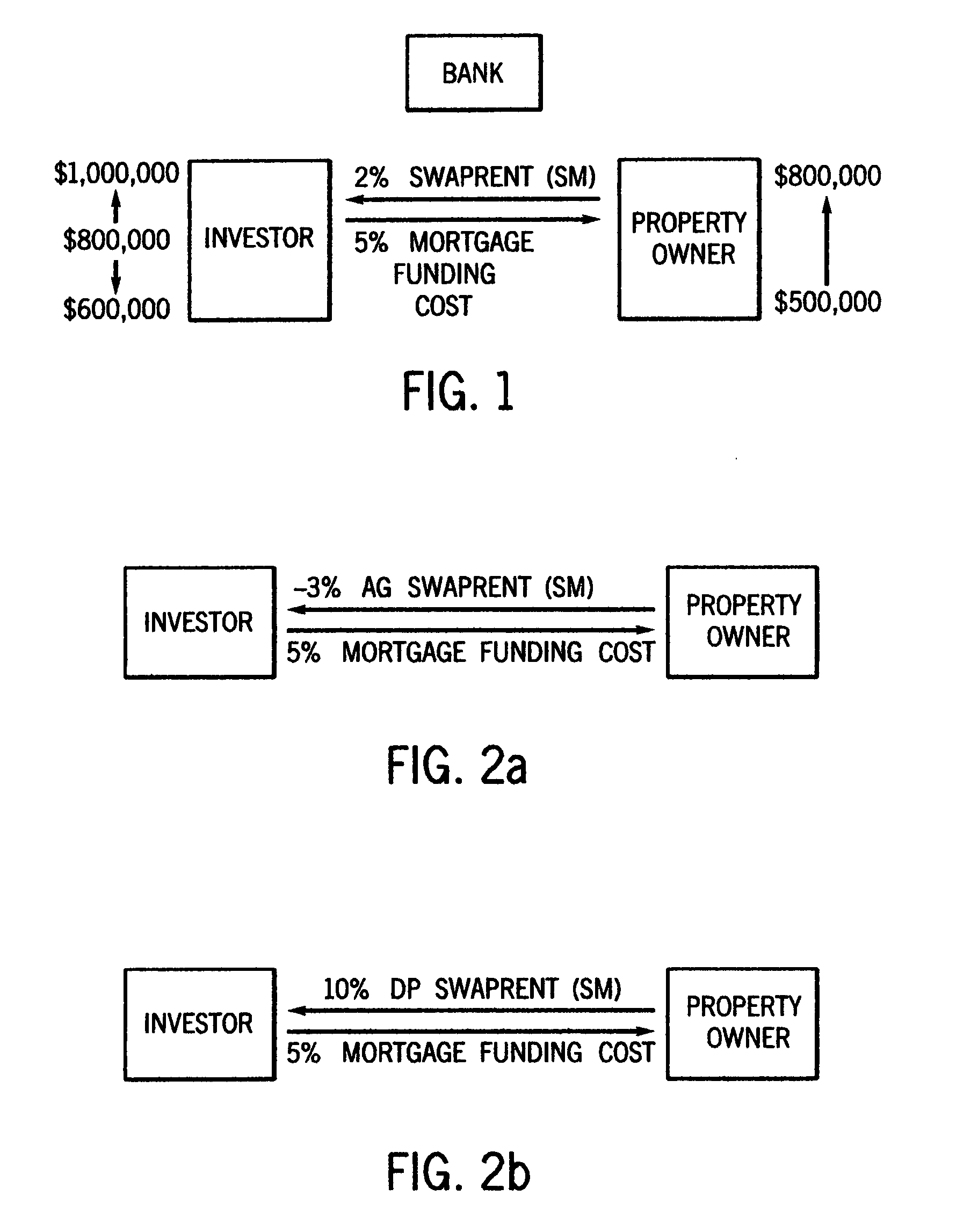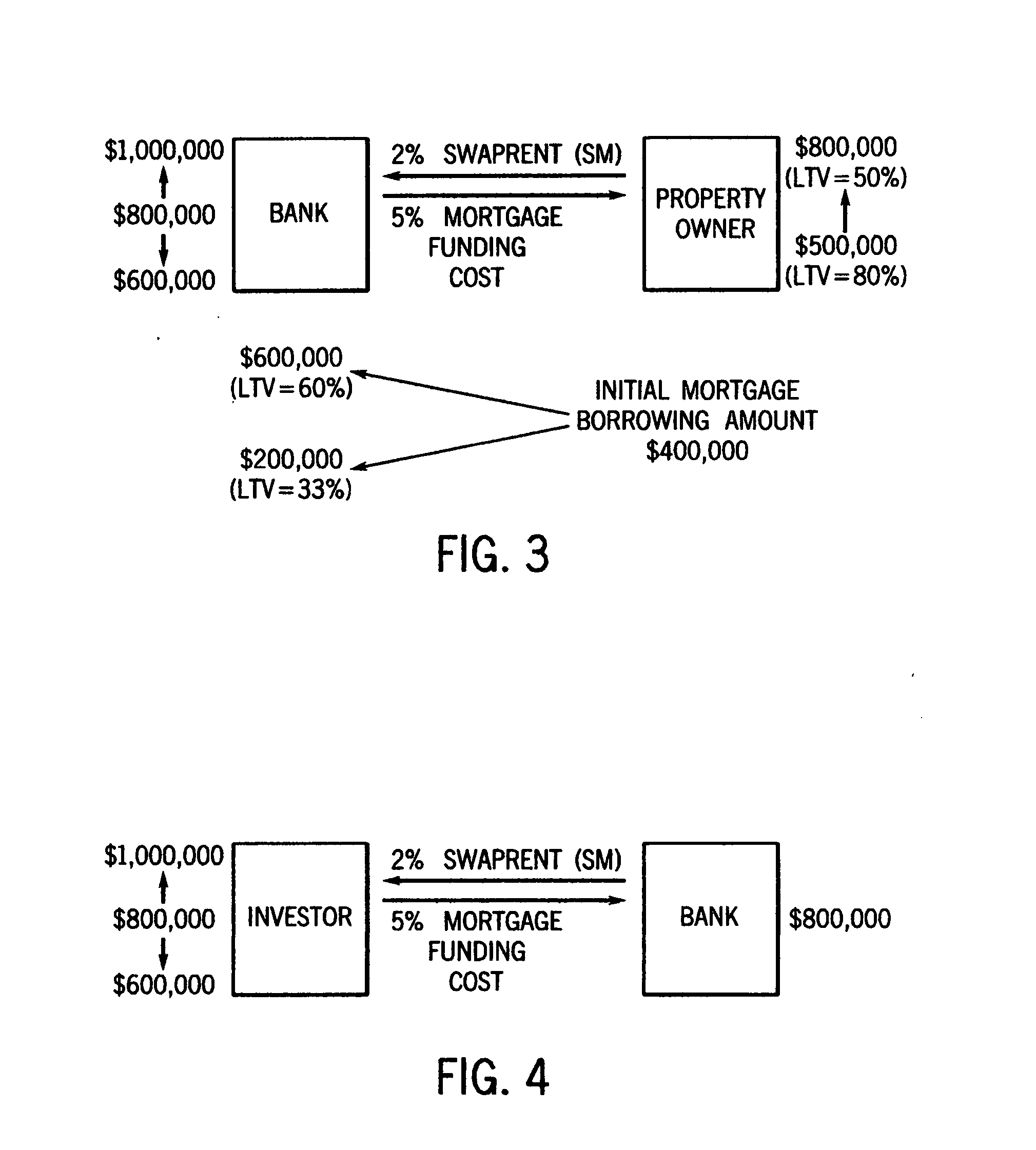The total value of residential real estate alone is reaching 24 trillion dollars and growing; however, as sophisticated as the U.S. financial market is, the American homeowners up until now still cannot hedge the equity value in their homes adequately and properly.
Particularly downward price fluctuations can have a significant
adverse effect upon the net worth of homeowners.
Although the housing market has been very strong in the past few years due to very low interest rates as well as many innovative
payment-reducing mortgage products, the real estate prices at some point in the near future may start to decline.
When that happens, the homeowners / investors will have no other way to protect the
erosion of their asset value, other than selling the property outright; however, what is best for the households financially may not be the best for the family's overall welfare due to this disruption of forced sell-off and
relocation.
At the present time, there is no efficient means for an individual homeowner to protect the value of the investment in his home when residential real estate values are declining.
Traditionally, the homeowner either waits to sell his house when the real estate markets recover and the homeowner can make a profit on the sale, or if forced to move due to job changes or other
relocation pressures, the homeowner sells at a loss.
While there has been a market demand for many years for additional insurance coverage against market declines in house values, insurance companies have been reluctant to write such home-equity insurance policies for a variety of reasons.
An insurance policy that directly protect against a decline in a particular value of a home is one of “moral
hazard,” since many factors influencing the value of a home are under the
direct control of the homeowner.
If the homeowner fails to adequately maintain the house and property, or makes decorative or other changes that are idiosyncratic in nature, then a decline in the value of the property will inevitably result.
Yet, it would be difficult for an insurance company to objectively prove under some default provision in the insurance policy what portion of the house's reduced sale price was due to these “homeowner controlled” factors.
Another problem is that buyers of homes who paid too much for the property would have a special incentive to take out a home equity insurance policy due to the probability that they could not sell the house for the same price, at least within the relatively near future.
This is called the “adverse selection problem.” A home equity insurance policy would therefore place this risk squarely on the insurance company.
Yet another problem would be a home equity insurance policy holder who neglected to make reasonable efforts to obtain market value for his house at the time of sale because they know the insurance company would make up the difference.
These reasons have made home equity insurance policies unfeasible.
However, the current products offered to the consumers such as the SEM, SAM or Reverse Mortgages and HECM are not satisfactory because they do not offer the same
economic benefits that derivatives could traditionally offer that would be much better than non-derivatives cash financial instruments could ever provide.
In addition, despite the sophistication of many areas of the financial markets, there is still no financial product specifically designed to help homeowners or commercial property owners and lenders protect the value of this significant asset class.
However, selling and buying real estate is an inherently inefficient and expensive process, making it exceedingly difficult for investors to efficiently invest capital in desirable real estate holdings.
Furthermore, to truly diversify a commercial real estate investment portfolio, one would need to purchase different types of real estate in many different geographic markets, which would make the costs to execute such a real estate investment strategy exorbitant.
Moreover, once purchased, such real estate holdings need to be maintained and managed, which can substantially further increase these costs.
Trading in this contract was promptly suspended in October 1991, however, when it became apparent that few homeowners were availing themselves of an exchange-based
system, despite the presence of unstable residential real estate prices in England, and the exchange was required to artificially support trading values in the futures contract to
mask this deficit in customer usage.
None of these experimental markets had generated sufficient
momentum or critical
mass to make it a success so far.
Other attempts to utilize traditional disaster or calamity insurance concepts by putting up reserve such as those employed in the life or auto insurance industry have also not succeeded.
In addition, treating real estate properties simply as equities which typically have uncertain future variable yields in the form of dividends are not sufficient to develop more sophisticated derivatives markets such as forwards and options.
One problem with the exchange-based contracts are that they are more suitable for speculators, investors or institutional middlemen such as inter
bank traders who may desire to use them for hedging in order to turn around and offer other types of more
consumer friendly products in the future.
These exchange-based contracts themselves are by nature very complicated to use and therefore unsuitable for the average consumers / homeowners.
As for the current OTC market, the TRS and PRS are not very intuitive to most people.
They are difficult to understand, even for the industry professionals.
Although it appears that the fixed “spread” is on a floating basis as it had evolved from and still is related to a TRS, there is
ambiguity whether it could be applied to fixed rate differentials as well.
As the equity market may be more dominated by sophisticated institutional investors, these investors may not have that much trouble with it; however, when TRS and PRS are borrowed and applied to the property markets they do not offer a good fit because the bulk of the properties are still in the hands of the unsophisticated home-owners and real-estate investors who are typically not familiar with the derivatives market.
As could be easily understood that there is no way anyone can approach a 70 year old home owner to ask him to do a TRS or PRS trade quoted above in order for him to manage his home equity.
Similarly it will be equally challenging to convince the same homeowner to open a margin account to trade futures in order to protect his home
property value.
Both the existing OTC and exchange-based contracts are way too complicated to be products for the consumers.
Even for institutional use, the current practices do not offer proper hedging correlations for hedgers as the indices they use are too broad.
As a result, these markets will remain small and illiquid, and only have participation by the people who are involved in this esoteric futures industry or the current institutional OTC swaps markets.
TRS and PRS do not offer many hedging functions traditionally offered by derivatives on many other asset classes, such as forwards and options.
 Login to View More
Login to View More  Login to View More
Login to View More 


